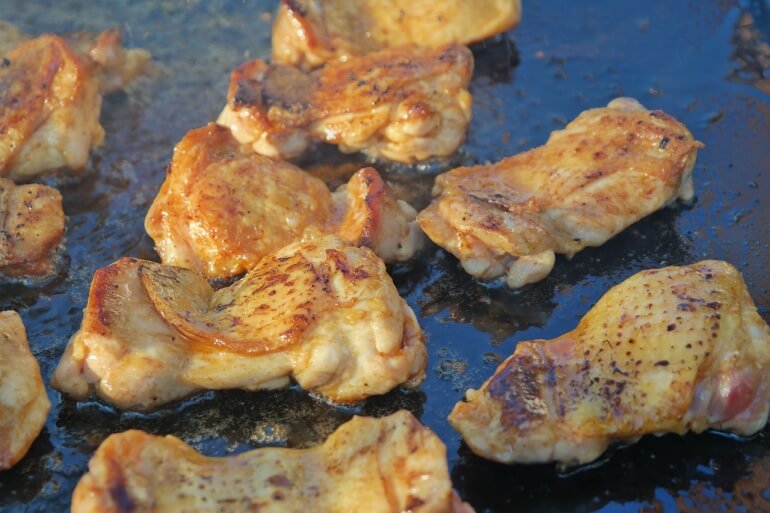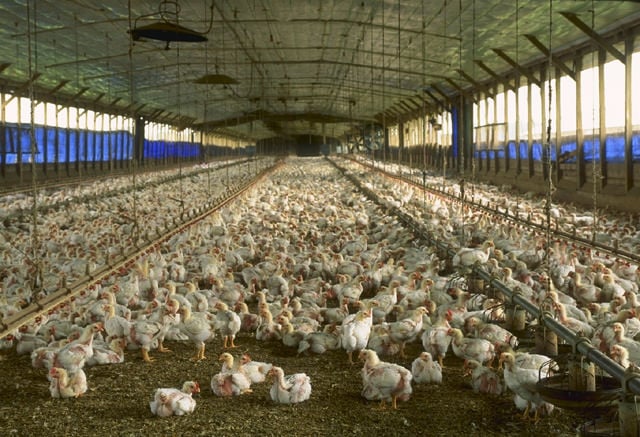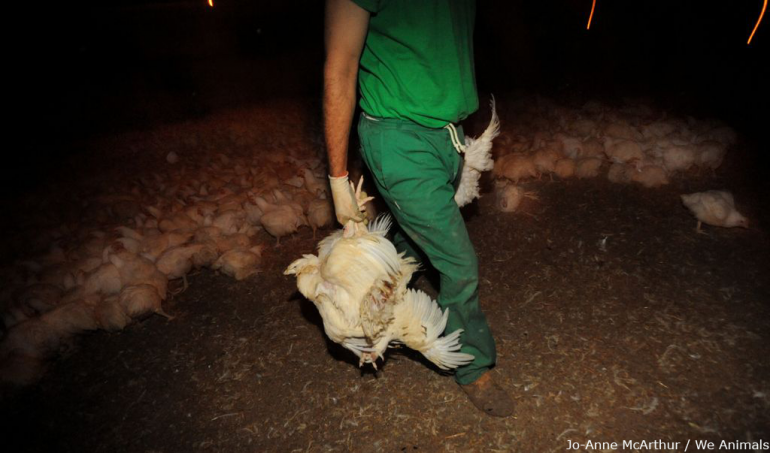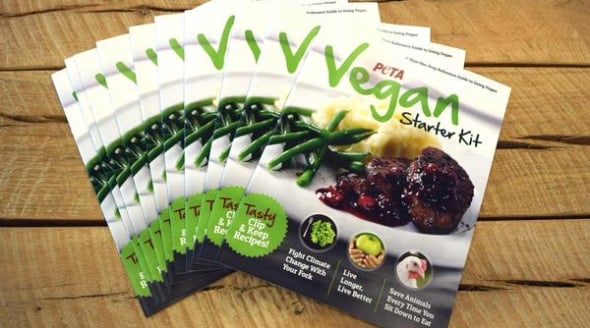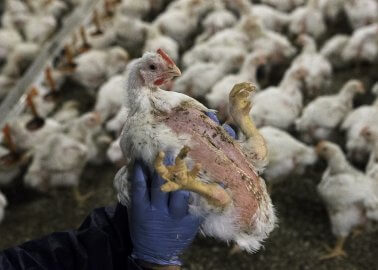8 Disturbing Things You Didn’t Know About Eating Chicken
Brits eat an estimated 2.2 million chickens per day. This staggering number accounts for nearly half of all meat consumption in the UK. But do these consumers know all the facts about what they’re eating?
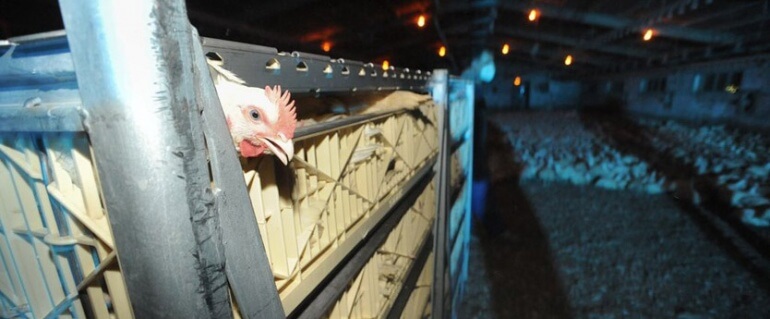 Jo-Anne McArthur | We Animals
Jo-Anne McArthur | We Animals
Here are a few hard-to-swallow truths that you might want to share with the meat-eaters in your life:
1. Chicken farming is directly linked to the rise of potentially deadly ‘superbugs’.
Kept in highly unnatural conditions in huge, crowded sheds, intensively farmed chickens are often fed huge amounts of antibiotics just to keep them alive. This is contributing to the rise of drug-resistant bacteria which pose a major threat to human health.
Just this week, an investigation showed that UK poultry producers have increased their use of fluoroquinolones, a class of antibiotics which are banned in the US, by 59 per cent, despite evidence that they are linked to the spread of potentially deadly bacteria in humans.
2. You could be eating poo.
Research has shown that as much as 92 per cent of all chicken on sale is contaminated with faecal matter. Gross.
What’s more, the poultry excrement produced on farms poses a grave environmental problem, with the potential to contaminate rivers and lakes with toxic chemicals and hormones.
3. Chicken is a major cause of food poisoning.
According to the Food Standards Agency, almost three-quarters of shop-bought chickens are contaminated with campylobacter, which explains why food poisoning from poultry continues to make almost a quarter of a million Brits ill every year.
4. And it contains a shocking amount of fat.
A medium-sized chicken now contains a pint of fat. Professors Michael Crawford and Yiqun Wang of London Metropolitan University found that chicken contains as much fat, gram for gram, as a Big Mac. They analysed chicken thigh meat from several supermarkets and found that it contains more than twice as much fat as it did in 1940, a third more calories and a third less protein.
5. This is how a typical chicken raised for meat lives:
It’s not pretty. “Broiler” chicken sheds are typically the length of a football field and can house a staggering 50,000 birds each. There is often no natural light, and the air reeks of ammonia, which can damage the birds’ eyes and respiratory systems and cause painful burns. They’re bred to grow so large, so fast, that chickens’ legs often collapse under the weight of their oversized bodies. And they can be sent to have their throats slit when they’re just 38 days old.
6. You can’t trust the label.
Red Tractor, RSPCA Assured, Soil Association – these schemes are almost meaningless as far as animal welfare goes. Even on farms bearing these labels, animals are often mutilated without painkillers, artificially inseminated, kept in crowded conditions, robbed of their beloved offspring and shipped in all weather extremes to watch other animals be killed before sharing the same fate.
7. Plus, for every chicken you see on sale, many others have died along the way.
The system isn’t just cruel – it’s also hugely wasteful. Approximately 4 per cent of birds on broiler farms die from illness or injury before they reach “slaughter weight”. And because of the stress of being caught, crammed into crates and transported, around 20 million chickens per year are already dead by the time they arrive at EU slaughterhouses. And the insanity doesn’t end there. It has been estimated that around 50 million chickens are discarded every year as household waste.
8. Chickens are actually awesome.
Have you ever spent time with a real live chicken? They’re intelligent, cheeky, playful and sociable, and all of them have their own unique personalities. They can also communicate using complex vocalisations, engage in mathematical reasoning and are dedicated to their families. They’re so much more than a collection of nuggets, wings and drumsticks.
If you’re thinking about eating chicken – just don’t.
Eating vegan is better for you and better for animals. We can help you find delicious plant-based food instead:

